Did you know that Canada produces almost 80 percent of the world's maple syrup? The province of Quebec is by far the largest producer of wage products, accounting for 91 percent of Canadian production. New Brunswick, Ontario and Nova Scotia together account for 8 percent. The United States is the second largest producer in the world, accounting for about 24 percent of global production, with 50 percent of U.S. production from Vermont, 20 percent from New York and 12 percent from Maine.
So what's so special about maple syrup, you may ask? Maple syrup, also known in Canada as liquid gold, is a really special product. It is a sweet, delicious syrup made from tapping the juice of maple trees. It is a staple in the Canadian diet and is one of the most popular products in the world. Most people use it as a spice on top of pancakes and waffles, but it also tastes good on bacon, donuts, cakes, fudge, taffy and drinks. In this article, we will delve deeper into the history, production and export of maple syrup, as well as its health benefits, and why and how it is linked to Canadian identity.
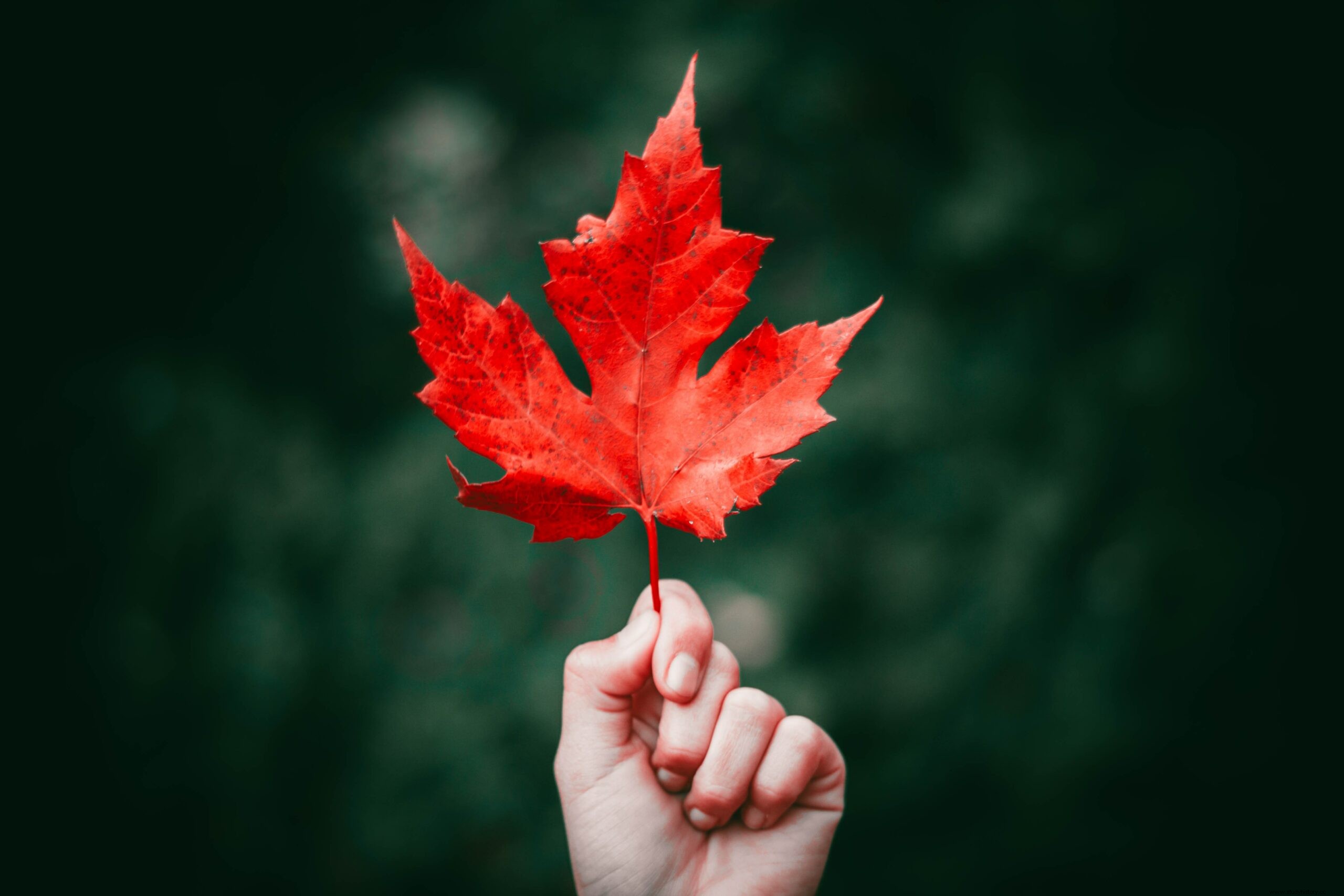
The story of maple syrup
The first known people who have ever produced maple syrup are the indigenous peoples living in the northeastern part of North America. This happened long before the first European settlers arrived. Indigenous people extracted juice from maple trees and wanted to use it as a source of calorie food during the winter months when it was difficult to find food. They also used it as a sweet water to make game, which may later have established the culinary technique for hardened meat.
The indigenous people called the "sugar-free" period when the sap was collected the "pay moon" or "sugar month". This period would start on the first full moon of spring. They wanted to celebrate the day with a Maple Dance. The tradition of sugaring was established in communities in the deciduous forests of North America and has survived to this day.
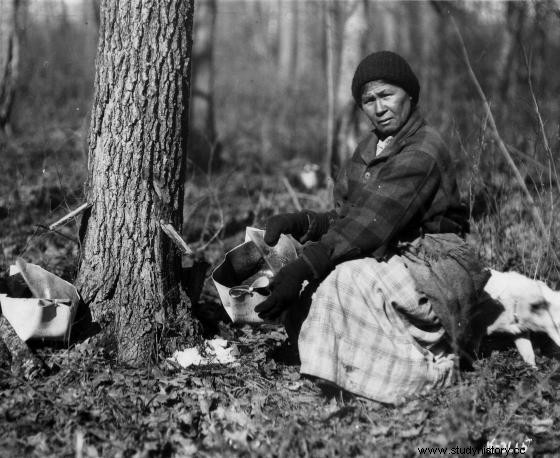
Early indigenous practices and methods of European colonists
Early indigenous methods of sap collection involved cutting a V-shape into the bark of a maple tree. They would place a wedge in the bottom of the cut and let the juice flow into a bucket located at the bottom of the tree. Sometimes indigenous peoples made these wooden buckets hollowed out with an ax. They use these every year. Others were made of birch bark and were only used for one season. The juice will be collected and slowly boiled until it becomes syrup. At this point they would let it cool and it would be stored in buckets. Sevje was usually collected and cooked by the women of these tribes.
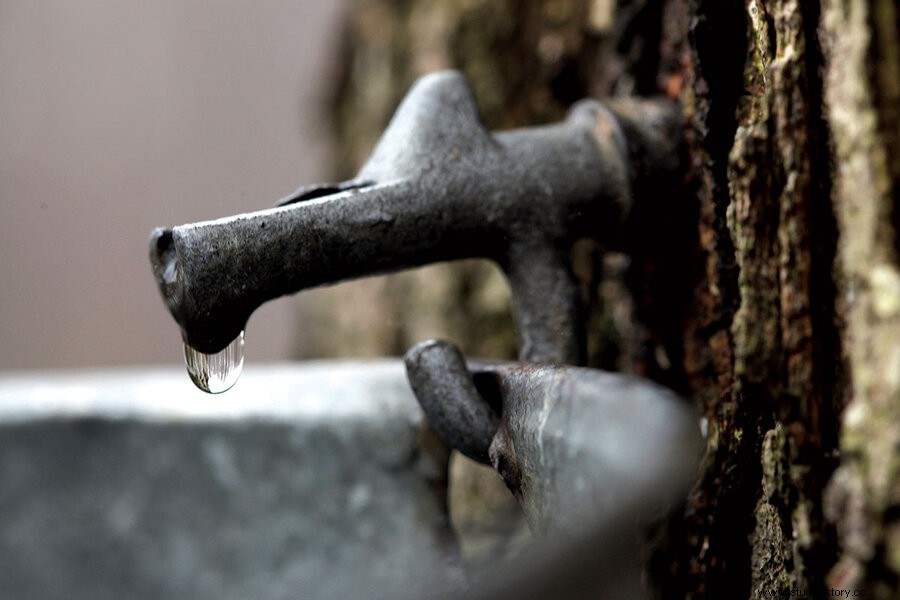
When European settlers came to the area, they learned to drain maple trees from indigenous peoples. Cooperation with the Europeans was crucial for indigenous peoples, because the trade and production of maple syrup was their only source of income during colonization. Instead of using a wedge to extract the sap, they would drill holes in the trees using screws. They would then insert the wooden spouts into the holes and hang buckets from them to collect juice. The juice was then transported to a sugar shed where it was boiled down to syrup in large metal boilers hung over a fire. Over time, changes in evaporation methods reduced the time it took to boil the juice. The transport of the syrup to the sugar shop was also improved to make the work more comfortable and efficient.
Harvesting Maple Sap
In the autumn, maple sugar deposits concentrated sugar in the rays from the tree. These sugars ripen in winter and are harvested while the frost is still in the ground. The juice flow begins in early spring when the temperature rises above 0 degrees in daylight, followed by nights below freezing. Inside the tree, pressure created by temperatures above 0 degrees Celsius creates a natural juice flow. When the internal pressure of the wood is greater than the external pressure, the juice will flow out of a tap drilled into the wood. The clear sieve rushes out of these taps and into the sieve collection system.
As the day goes on, the pressure in the tree drops and the juice flow slows down and stops. Negative pressure is found in the tree and begins to absorb water through the root system. This process continues for six weeks between March and April. At the end of this period, the juice develops a cloudy appearance, and the sugar content is turned off automatically. At the height of the sugar season, the juice contains between 2-5 percent sugar. During the maple harvest, a tree releases about 7 percent of the juice.
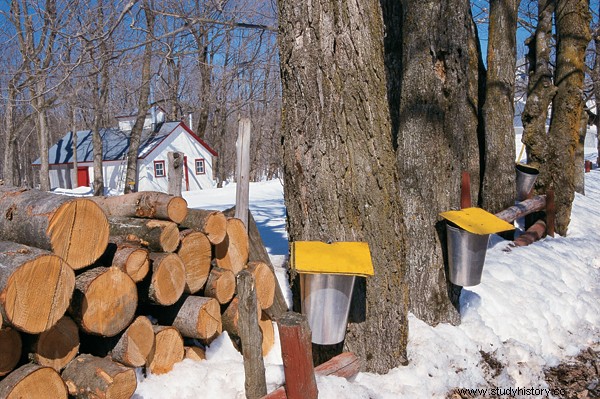
There are different methods people use to collect juice. The traditional bucket collection, although still used in the maple belt, is being replaced by a vacuum tube system that reduces labor and creates a cleaner environment for collecting juice. These systems usually transport the sap directly from the trees to one or more collection points, from where the sap is transported for treatment.
Once the juice is collected, the raw material is reduced by evaporation to remove excess water. It takes 30 to 45 liters of maple juice to produce 1 liter of pure maple syrup. The trees on one hectare of land can carry 250 liters.
Export of maple syrup
In 2016, there were over 11,000 XNUMX payrolls in Canada and 47 million prints. In total, these farms produced 12.2 million liters of syrup, which accounts for 75 percent of the world's maple syrup. Quebec, with over 7,800 farms and 42 million cranes, produced 11.2 million gallons in 2016. Quebec represents 92 percent of total Canadian production. The rest of the Canadian product came from New Brunswick (4 percent), Ontario (3 percent) and Nova Scotia (1 percent). The value of wage products made during 2016 amounted to $ 487 million.
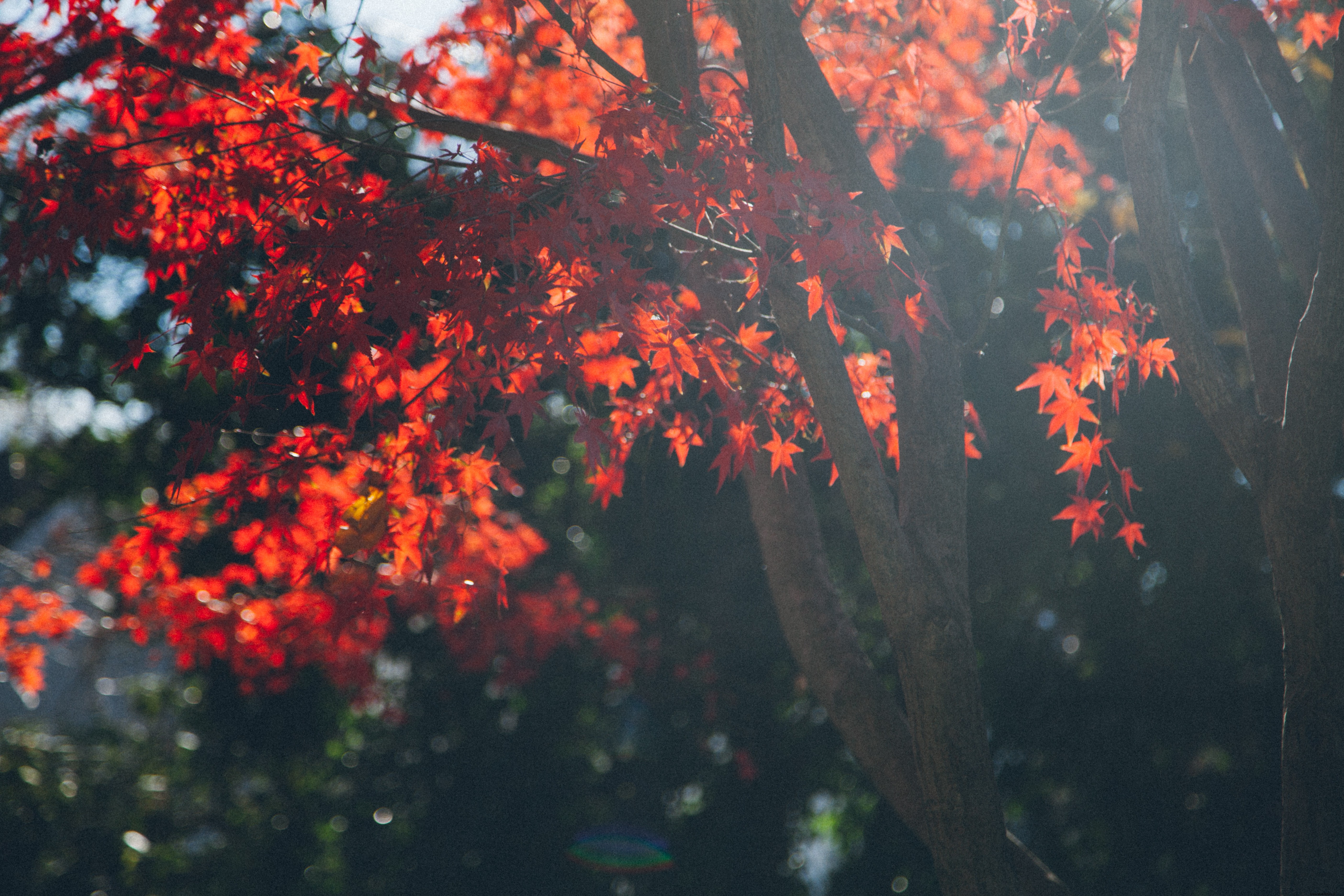
Canada's share of world wage syrup production increased by 225 percent from 2006 to 2016. However, the share of world production is felt from 80 percent to 75 percent between 2015 and 2016 due to increased competition in the United States.
In 2016, over 45 million kg of wage products were exported to a value of 381 million dollars. Quebec exports as much as 95 percent of Canada's wage products. Canadian wage products are exported to over 50 countries. The largest export market is the United States, to which Canadian producers send 65 percent of total exports. Other buyers include Germany (11 percent), Japan (7 percent), the United Kingdom (4 percent), Australia (4 percent) and France (4 percent).
Maple syrup grading system
Maple syrup is graded according to color, taste and density. In Canada, the United States and Europe, "Grade A" maple syrup is divided into four categories:golden color and delicate taste; amber color and rich taste; dark color and robust taste; very dark color and strong taste. If a syrup does not meet these standards, it is considered a "Canada treatment grade." Maple syrup must be between 66 and 68.9 degrees on the Brix scale, which measures the sugar content of liquids. Anything less or more can not be graded and sold as pure maple syrup.

In the early 1970s, the traditional buyers of maple syrup were large food companies. As the US Food and Drug Administration lowered the minimum volume of maple syrup that must be listed as an ingredient in products sold as "maple syrup" or "maple sugar" from 15% to 2%, sales dropped dramatically and the industry experienced major problems. Efforts were made to develop a new market aimed at consumers. The growth of that market restored the industry.
Maple syrup is served mainly on pancakes and is considered a spice. However, you can also use it to prepare sauces, glazes and vinaigrette, marinades and for baking.
Payroll syrup supply management in Quebec
Maple syrup production in Quebec is controlled by the Federation of Quebec Maple Syrup Producers (FQMSP), established in 1966. This organization manages the province's supply of syrup, which changes each year based on uncertain weather conditions, and adjusts the price accordingly. In the 1990s, the federal government gave the FQMSP authority over the sale, pricing, and export of syrups. FQMSP sets annual quotas for all producers. It is also trying to even out the price of syrup through its Global Strategic Reserve, two large department stores in Laurierville and Saint-Louis-de-Blandford, Quebec. All syrup in the province comes through these department stores, where more than 60 million pounds of reserve wage syrup is kept in barrels. This year, when production is low, syrup from the reserve is introduced to the market to compensate for shortages, and therefore reduces prices which are increased by high demand.
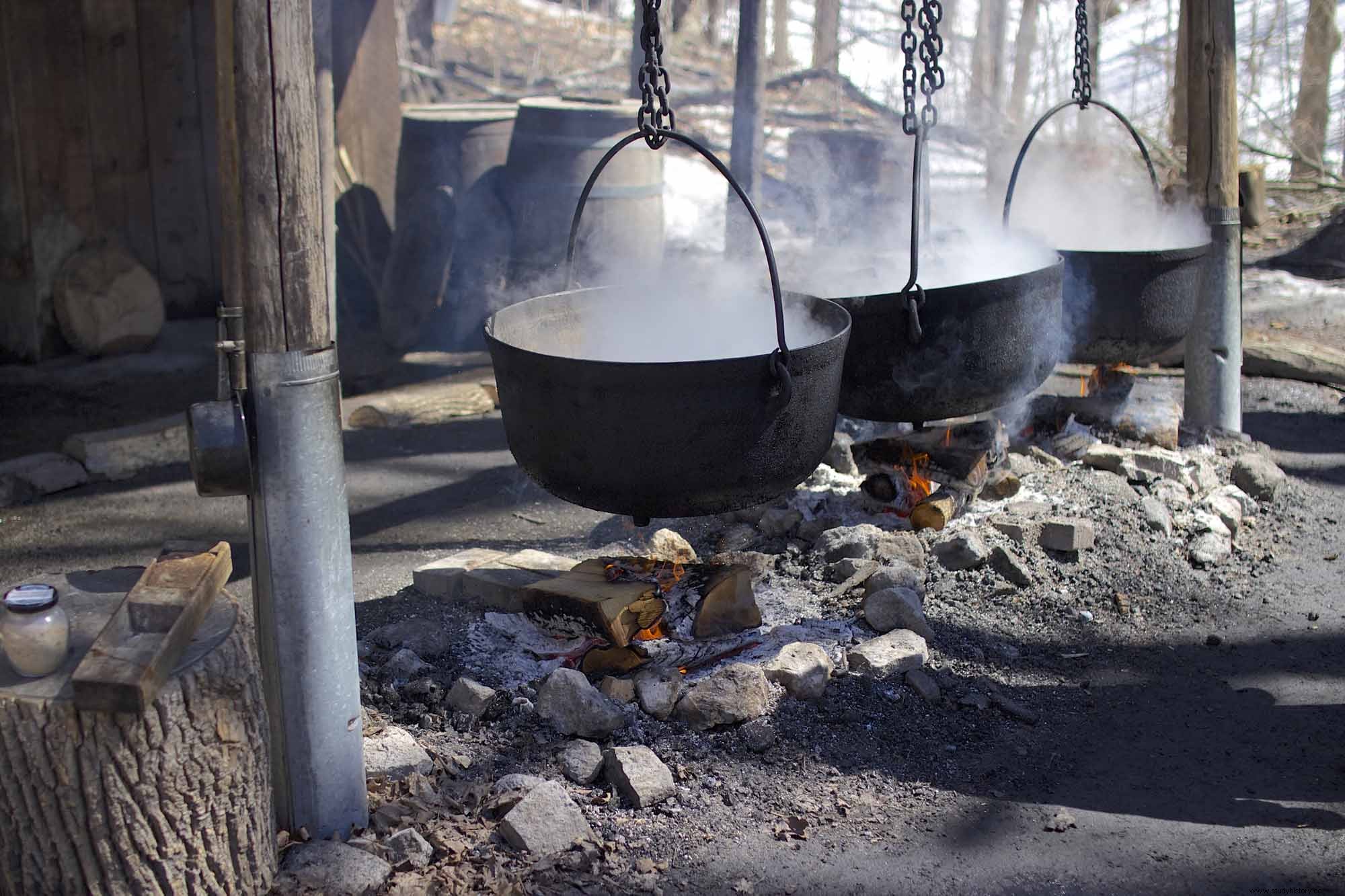
Not all maple syrup producers agree with FQMSP's control over supply handling. Some are not happy that they are required by law to work with a syndicate that has control over production, and some try to avoid FQMSP by selling syrup on their own, which FQMSP says is illegal activity.
Representation of Canadian Identity
The saying "as Canadian as maple syrup" demonstrates the extent to which the production of maple products is associated with Canadian identity. The Canadian payroll, for example, is at the heart of Canada's National Flag. Maple syrup and maple products are sold all over the country, especially in tourist shops and are often given as gifts.
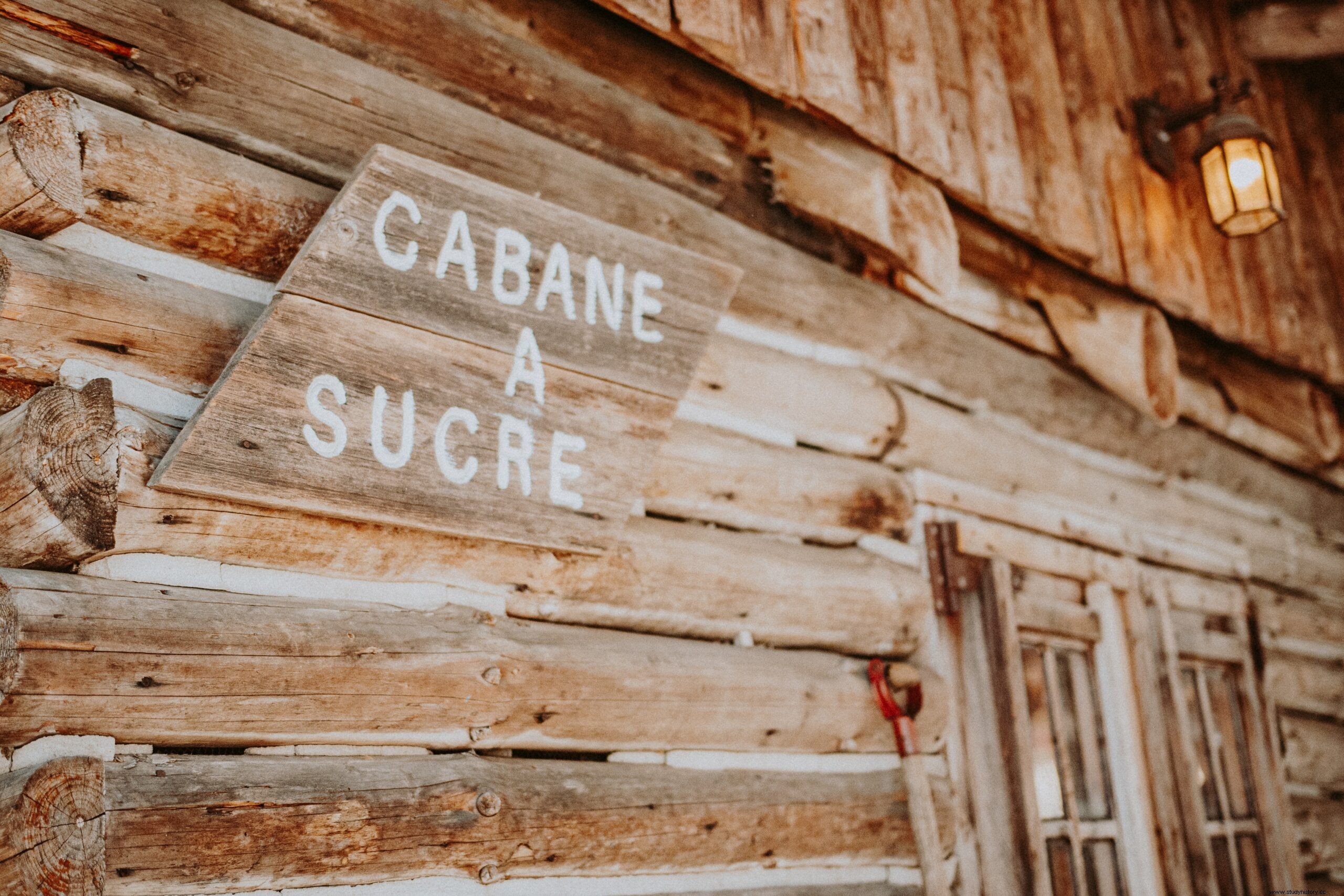
To French Canadians, going to cabane a sucre is a cultural tradition that is still popular even today. At the height of Catholicism until the mid-1950s, when the sugar season coincided with Lent, a period of fasting before Easter, sugar huts were popular places to celebrate the end of winter and the beginning of warmer spring temperatures. Every spring, Canadians gather at le temps des sucres (pay season) on payrolls to enjoy a meal, listen to traditional music and eat taffy on the snow. The traditional meal consists of ham, an omelette, pea soup, baked beans, sausages, potatoes, pancakes and crispy pork, all dipped in maple syrup if desired.
In Ontario, children often visit sugar huts on school trips or with their families in the spring. There they learn how to make syrup and taste freshly baked maple products. Maple syrup festivals are a big thing every year between March and April.
Health benefits of maple syrup
High quality maple syrup is used all over the world and is very well known for its health benefits.
Maple syrup is a pure, natural sweetener. It is rich in vitamins and nutrients that help strengthen your immune system. Its antioxidant properties also help protect your body from free radicals. Some of the essential nutrients found in maple syrup are zinc, potassium, manganese, calcium, iron, magnesium, thiamine and riboflavin.
Manganese is important for ensuring a normal function of the muscles and helps to produce energy. Calcium helps strengthen your bones and contributes to healthy teeth.
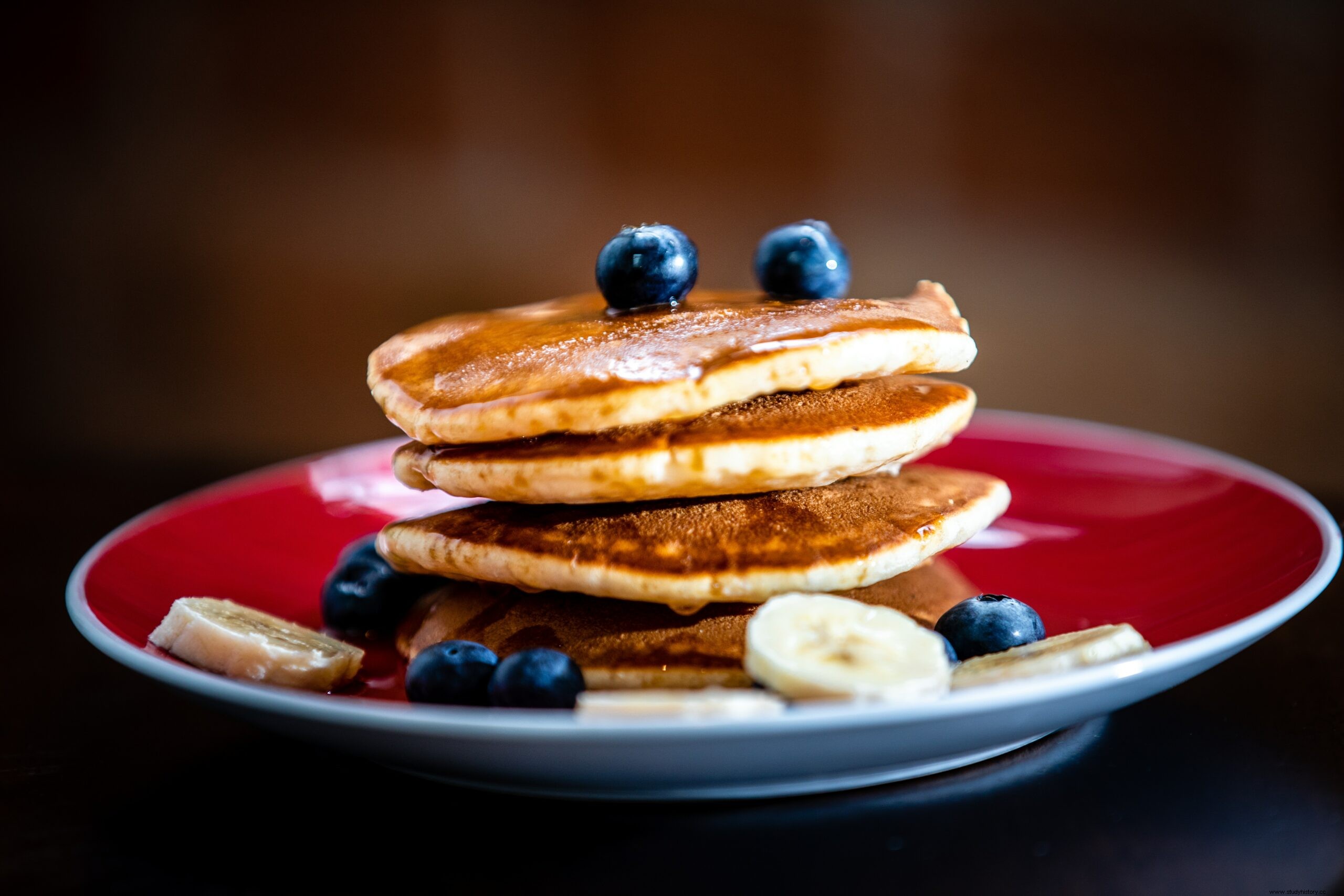
Riboflavin is needed to ensure normal metabolism. Magnesium reduces the risk of heart disease. Potassium is important for maintaining a healthy blood pressure.
Maple syrup also contains a lot of zinc, which is essential for many functions in your body. It is hugely beneficial for a healthy heart. It is also an important antioxidant needed for cell growth and regeneration. 1/4 cup of high quality maple syrup covers over 40 percent of your daily zinc needs and 100 percent of your daily manganese needs.
Canadian maple sugar is one of the most popular products in the world and is also a much healthier alternative to regular sugar.
the conclusion
The next time we drip maple syrup on top of our pancakes and waffles, we can be sure that we support one of the oldest industrial sectors in the world, and we will experience the uniqueness of a natural product that brings the flavor of the Canadian summer into our homes. .
